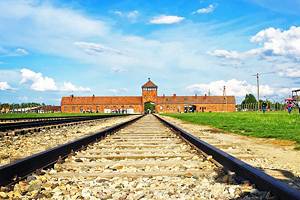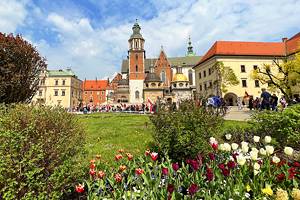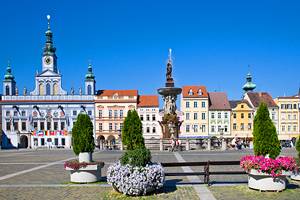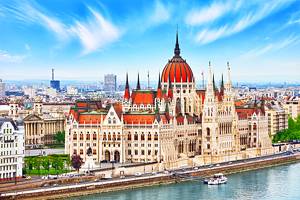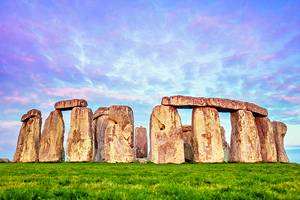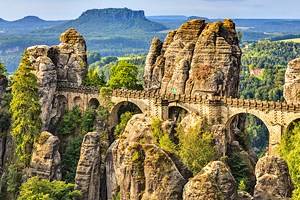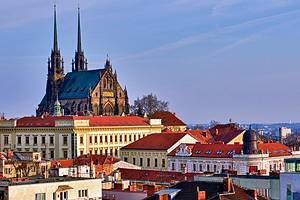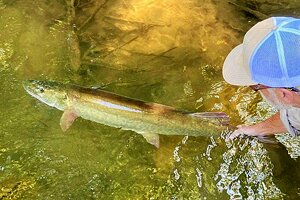16 Best Places to Visit in Poland
The best places to visit in Poland can take you through almost a thousand years of history, immersing you in sites with stunning medieval architecture, remnants of WWII and its devastation, and castles and palaces in every corner of the country. It's also home to two of the first-ever UNESCO World Heritage Sites: the historic center of Krakow and the Wieliczka and Bochnia Salt Mines.
But this ancient country is also home to expansive national parks, mountains, and lakes, with seemingly endless trails cutting through virgin nature waiting to be explored.
No matter why you're heading to Poland, discover the most stunning destinations with our list of the best places to visit in Poland.
1. Krakow

One of the oldest cities in Poland, Krakow was already inhabited back in the 7th century. Because the city escaped most of the WWII destruction that fell on other Polish cities, Krakow's Old Town Center still retains its stunning medieval architecture. The Wawel Castle and the historic district of Kazimierz – also known as the Old Jewish Quarter – in the area are both designated as UNESCO World Heritage Sites.
Krakow is home to around 40 urban parks, including 19th-century Planty Park, which covers an area of 21 hectares and forms a green ring around the city center, and the Lasek Wolski forest, which offers hiking and biking trails in a large woodland area just minutes from the city center.
On rainy days, Krakow's 28 museums are a must-see, especially the Wawel Royal Castle National Art Collection, where visitors can also see period furniture, a massive collection of Flemish tapestries, the royal jewels, and a collection of weapons and armor dating back to the 15th century.

For an unusual, in-depth look into ancient Krakow and its streets, there's the Rynek Underground Museum. At this attraction, you can descend the stairs beneath Rynek Glowny (Market Square) to see the remains of medieval Krakow. A pathway can take you over the original streets and merchants' stalls that were excavated just two decades ago. You can also see high-tech exhibits on centuries-old artifacts (like ancient jewelry and coins). Don't miss the short documentaries playing on loops before the exit. They trace important events in the history of Krakow.
Another worthwhile museum in Krakow is Oskar Schindler's Enamel Factory, whose namesake owner helped more than 1,200 Jews avoid concentration camps by employing them. This fascinating attraction recreates what life was like in Krakow during the Holocaust through various exhibits, including a railway station covered in troop mobilization ads and alleys of the ghetto used to confine Jewish residents. If you're planning to go to Auschwitz, this museum can provide important historical context ahead of your visit.
A number of major attractions and things to do are located outside the city and are popular as day trips. Notable points of interest include the world's oldest functioning salt mine Wieliczka, the Auschwitz-Birkenau concentration camps, and the Tatra Mountains and national park.
2. Warsaw

Poland's capital was left in ruins after WWII – almost 85 percent of its buildings had been turned to ash or systematically razed by Nazi forces. As soon as the war ended, the city embarked on a massive effort to reconstruct its historic center using original plans. As a result, the Baroque and Renaissance merchant houses you see today are perfect replicas of the originals.
Although WWII also caused the loss of collections held by museums and palaces, the city is still home to approximately 60 museums today. In addition to art and history museums, Warsaw also offers some unusual choices, including one of the world's only Museum of Posters, a museum dedicated to the WWII Warsaw Uprising, a Neon Museum, and a Museum of Caricature.
The National Museum, which chronicles the history of the city, also houses the largest collection of paintings in Poland – including a number of works of art that came from Adolf Hitler's private collection.
Warsaw might not have as many parks as Krakow, but Palace on the Isle and its formal gardens more than make up for it. This 18th-century palace is surrounded by 76 hectares of urban forest and is home to a planetarium, an outdoor theater, pavilions, and much more. The Baroque palace was built as a bathhouse in 1680 and is filled with splendid decorations.
For a very different outdoor adventure, walk down Krakowskie Przedmiescie, Warsaw's best architectural street. Old homes, monuments, the Presidential Palace, and the Polish Academy of Sciences are all steps from each other here. Spending an afternoon strolling the cobblestone street, sipping coffee at the cafes, and seeing the elegant churches and townhouses is one of the most memorable things to do in Warsaw. If you're into classical music, don't miss the nearby Frederick Chopin Museum, which has more than 7,500 artifacts related to the famous composer, including his travel watch and locks of his hair.
3. Tatra Mountains

The Tatra Mountains and National Park form a natural border between Slovakia and Poland. Though most of the mountain range falls into Slovakia, you can hike between countries easily. The Polish side of the park has over 270 kilometers of hiking trails.
Poland's highest mountain, Rysy, is located in the Polish Tatras. At 2,500 meters, it's the highest Tatras peak in either country that can be climbed without a park guide. In addition, the park is home to over 600 caves, with the limestone cave system, Wielka Sniezna, being the longest (23 kilometers) and deepest (824 meters).
The Tatras have waterfalls, streams, and mountain lakes. Morskie Oko lake is the largest lake in the park. Located deep within the park, it can only be reached after a two-hour hike through hills and a thick forest of Swiss pines.
4. Wroclaw

The city of Wroclaw hasn't always been Polish — over the centuries, it has belonged to everything from the Kingdom of Bohemia to Prussia to Germany. Wroclaw has only officially been part of Poland since 1945, after the end of WWII changed some of the border lines in Europe.
The Lubomirski Museum is a good place to visit to learn more about the history of the city — the museum covers the invasion of the city by Nazi forces and later the Soviet Union, as well as a number of WWII events. The Wroclaw City Museum completes that history with an overview of Wroclaw over the past 1.000 years.
Wroclaw's oldest area is the 13th-century Main Market Square, which includes St. Elizabeth's Church and the Old Town Hall. It's one of Europe's largest market squares. Just a few steps away is the Pan Tadeusz Museum, with multimedia exhibits dedicated to Polish customs displayed inside a stunning tenement building.
In summer, visitors can hop on open-top historic buses to travel around the city. Those exploring on foot can search for Wroclaw's dwarfs — over 600 tiny bronze figurines of elves can be found throughout the city, hiding around corners, on sidewalks, and on lampposts. The city hosts an annual Wroclaw Dwarf Festival every September.
5. Bialowieza Forest Reserve

Europe's largest remaining section of the primeval forest that once covered much of the continent, the Bialowieza Forest Reserve has definitely earned its designation as a UNESCO World Heritage Site. The forest sits on the border between Poland and Belarus — a border crossing for hikers is actually located within the forest itself — and covers an area of over 1,400 square kilometers.
Bialowieza is a bird-watcher's paradise, and aficionados can join bird-watching tours headed by local ornithologists. The forest is also home to bison and other large species.
The small village of Bialowieza is within the forest, and so is the Open-Air Museum of Wooden Architecture, where you can see windmills, wooden huts, a tiny wood chapel, a barn, and even a banya (sauna).
6. Bieszczady Mountains

One of the best places to visit in Poland in the fall are the Bieszczady Mountains, a massive range that extends all the way to Ukraine and Slovakia. They are unique because of their polonyna (a type of mountain meadow) that only occurs in the Carpathian region. Because the valleys and meadows softly slope up and down — rather than being too steep — they are a perfect destination for hiking. The foliage here transforms into a symphony of reds, oranges, and yellows in autumn.
Polonina Wetlinska, topping at 1,255 meters, is one of the most famous meadow trails — a picturesque, soft climb that shouldn't take more than two hours. At the top, a small guest house — one of the only ones in the entire mountain range — offers snacks and drinks plus a warm bed for those who want to extend their adventure.
A large section of the Bieszczady Mountains is part of the UNESCO East Carpathian Biosphere Reserve, home to brown bears, wolves, and bison and mostly covered by beech forest.
7. Ojcow

The tiny village of Ojcow, just 26 kilometers north of Krakow, is the gateway to Ojcow National Park. Poland's smallest national park at just 21.46 square kilometers, Ojcow is heavily forested and home to towering limestone cliffs, over 400 caves, and two river valleys. More than 500 species of butterflies inhabit the park — in spring and summer, they take over the trails and the flowering valleys and are a sight to behold.
The Trail of the Eagles' Nests, Poland's most famous tourist and hiking trail, connects 25 castles and watchtowers, including the Renaissance castle at Pieskowa Skala and the ruins of a Gothic castle, both of which fall within the park boundaries. The trail stretches 163 kilometers and can be walked, biked, or explored by minibus on the Castles Tour by The Eagles' Nests Trail, Day Tour from Krakow.
There are also two museums in the park, including the Władysław Szafer Natural History Museum and a branch of the National Art Collection.
8. Gdansk

Sitting right on a bay on the Baltic Sea, the ancient city of Gdansk is home to Poland's main seaport. Most of the old part of the city — known as the Royal Route or Royal Way — dates back to the 17th century and is beautifully preserved. Some of the main structures here include the City Gates, the Prison Tower, and a number of merchant houses.
Gdansk is also home to the world's largest brick church, St. Mary's, as well as the 700-year-old, star-shaped Wisloujscie Fortress and the 28-meter-tall Gdansk Nowy Port Lighthouse.
Although Gdansk wasn't directly affected by the war, its Museum of the Second World War is one of the best historical museums in the country. It features a number of vehicles — including a Polish Sherman tank and a German DKW motorcycle — as well as artifacts, documents, and photos connected to the war and the Holocaust.
9. Zalipie Village

The tiny village of Zalipie is best known for the folksy flower paintings that adorn almost every building in the area. This tradition started over one hundred years ago, when local women used a mix of powdered dye and milk to cover dirty surfaces with colorful designs.
Today, almost every cottage, barn, fence, and even Saint Joseph's church is painted this way – and so are many indoor spaces, including walls and furniture.
Of the many decorated buildings, The House of the Women Painters is perhaps the most stunning. It's considered the cultural center of the village and is home to a folk museum.
Another worthwhile attraction in Zalipie is the former home of Felicja Curylowa, an early 20th-century painter born in Zalipie — her entire three-room farmhouse is covered, inside and out, with flower paintings. The Felicja Curyłowa Farmstead Museum showcases the history of the tradition and how the flowers are painted.
At just an hour and a half away by car, Zalipie makes a great day trip from Krakow.
10. Torun

One of the oldest cities in Poland, Torun's history dates back to the 7th century (although archeologists believe the first settlement may have been established in 1100 BC). Because Torun wasn't bombed or destroyed during WWII, the city's medieval Central Marketplace and its many Gothic houses and wood-beam 16th-century buildings are still standing.
One of these houses is the birthplace of astronomer Nicolaus Copernicus, which has been converted into a museum about the scientist's life and work. The other must-see museum in town is Muzeum Piernika, dedicated to a type of gingerbread unique to Poland, where visitors can try hands-on baking using traditional baking molds.
The entire Old Quarter area has been designated a UNESCO World Heritage Site — it's a great area to explore on foot, getting lost in little streets to discover the architecture and soul of the area.
Torun's 13th-century Teutonic castle is located here. It is partly in ruins, except for the sewage tower and cellars, as well as a nearby watermill.
11. Isle of Usedom

Since 1945, this island on the Baltic Sea has been legally divided between Poland and Germany. Nicknamed "the sun island" because of how many hours of sunshine it receives every year, Usedom is a popular holiday destination for both countries.
Soft white beaches, seaside resorts, and plenty of summer sports and activities are the main attractions, but the island is also home to a private botanical garden (open only during the warm months), the remnants of the Karnin Lift railway bridge (now designated as a Historic Symbol of Engineering in Germany), and the Dannenfeldt Mausoleum and cemetery.
Lakes, nature reserves, and manicured gardens are dot the island.
12. Bialystok

With hundreds of stunning old buildings, Białystok will please lovers of both history and architecture. Branicki Palace, built by a wealthy Polish-Lithuanian politician who once dreamed of becoming the king of Poland, is one of the most stunning sights in town — but smaller Hasbach's Palace is also worth a visit. The elegant structure is a French, Dutch, and Tuscan Renaissance architectural style.
Make sure to walk around Kościuszko Market Square, surrounded by beautifully ornate townhouses, plenty of cozy cafés, and the Podlaskie Museum, mostly dedicated to Polish paintings and art.
On a sunny day, take a walk down Lipowa Street, too, which was almost completely destroyed during WWII and has been restored to become a great place to spot boutique shops and restored historical buildings.
A branch of the Podlaskie Museum, the Historical Museum is an interesting stop to see what a wealthy 19th-century bourgeois home would've looked like — complete with original furniture and objects of the time.
The outdoor Podlaskie Museum of Folk Culture, located just a few minutes away in Wasilków, offers over 40 traditional wooden buildings to explore (including windmills and a lumberjack's hut) and artifacts like rural transport carriages, forestry tools, and children's toys.
13. Karpacz

This mountain spa town gets its share of visitors in winter, who come here to enjoy skiing on popular Mount Śnieżka. A winter wonderland, Karpacz also offers great ski jumping, snowboarding, and winter hiking.
In warmer months, nearby Karkonosze National Park offers lots of trails. Ambitious hikers often trek between Sniezka, Snieznik, and Sleza — three peaks that each stand at least 1,400 meters tall. Birdwatchers can also look for more than 100 species of feathered creatures in this park.
The main building in town is the 13th-century Lutheran Wang Chapel, made entirely of wood without using any nails. There are also a number of museums, including the Museum of Sports and Tourism about the area's history, a Museum of Toys (which has toys that date back 200 years), and the unique World of Trains, featuring a large collection of railway models and a virtual reality rollercoaster attraction.
14. Leba

The tiny village of Leba is one of Poland's best destinations for beach life. Though busy and filled with visitors in summer, Leba retains its lazy vibe, with the rolling sand dunes and the soft waves at the center of the attractions here.
For those wanting more things to do than just sit back and enjoy the sun, there's horseback riding and over 140 kilometers of hiking trails in the area.
With 32 kilometers of coastline, Slowinski National Park is home to "moving dunes," which are carried by the winds and move up to 10 meters a year. It's a stunning vision and a favorite stop for visitors. There's also pine forests and peat bogs to explore here, plus great opportunities for bird-watching.
15. Wieliczka

The medieval city of Wieliczka is home to one of the top tourist attractions in Poland: the Wieliczka Salt Mine. A great day trip from Krakow, this UNESCO World Heritage Site is Europe's oldest salt mine, dating back to the 13th century. After producing salt for hundreds of years, it ended its commercial operations in 1996 and transformed into a tourist attraction.
Take the Tourist Route — the recommended tour for first-timers — to see extraordinary salt sculptures, learn about the history of salt mining in Poland, and hear Chopin's music played with an accompanying light show over a magnificent subterranean lake. You can also wander around St. Kinga's Chapel, an awe-striking church that's constructed entirely out of (you guessed it!) salt. That includes the glowing chandeliers, octagonal-tiled floors, altar, and ornate archways.
If you happen to go back for a second excursion, opt for the Miner's Route. It converts tourists into novice miners as they descend 101 meters underground to explore the raw chambers around the Regis Shaft and learn how to use mining equipment, including a carbon monoxide absorber.
16. Oswiecim (Auschwitz)

Make your way to Oswiecim to visit one of the world's most somber places — the Auschwitz-Birkenau Memorial camps. The concentration and extermination camps were converted into museums to memorialize Holocaust victims and preserve evidence of the horrific events that happened here.
During busy periods, tourists who want to visit the camps are required to book a guided tour with an on-site educator. They'll explain the history of the camps and take you through key points of interest, including the wooden hospital barracks, prison rooms, and the railway tracks that would bring prisoners to Birkenau. It's an extremely moving and heartbreaking experience that humanizes an important piece of history.
Map of Places to Visit in Poland
More Related Articles on PlanetWare.com

Discovering Poland: This Eastern European country often makes it into the list of top-rated cheap places to visit in Europe — it offers all the history, culture, and natural beauty you might want without breaking the bank.
For an introduction to some of the most stunning destinations in the country, take a look at our list of the Top-Rated Tourist Attractions in Poland, as well as the 13 Best Things to Do in Krakow.
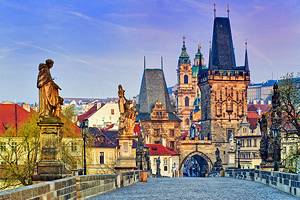
Exploring Around: Poland shares its Western borders with Germany and the Czech Republic — both of which are close enough for a great weekend trip (or sometimes even a long day trip).
For a stunning mix of natural beauty, history, and culture, take a look at our list of the Top-Rated Tourist Attractions in Germany. For castles and more hiking than you could ever want, hop over to our article on the Top-Rated Tourist Attractions in the Czech Republic.



